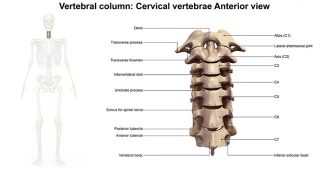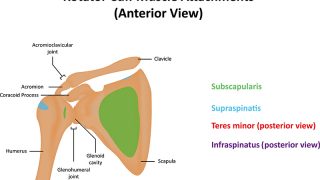The glenohumeral joint of the shoulder is the ball and socket joint. A SLAP lesion is an injury to the glenoid labrum (rim of fibrous cartilage attached around the margin of the glenoid cavity).
Shoulder & Neck Injuries
A stress fracture is a small crack in a bone or severe bruising of a bone which is caused by overuse and repetitive activities.
The acromioclavicular joint (ACJ) is a common area of injury in sports, usually caused by a fall onto the bony tip of the shoulder or by a hard impact to the shoulder. The acromioclavicular joint is surrounded by a joint capsule, with additional support from ligaments (acromioclavicular ligaments and coracoclavicular ligament, which is made of […]
Adhesive capsulitis / frozen shoulder is characterised by stiffness and pain in the shoulder (occurs in the glenohumeral joint). Symptoms gradually worsen throughout the life of the condition and then usually resolve over an average time of 1.5 – 3 years.
Acute wry neck is characterised by a sudden onset of neck pain associated with an extreme limitation in neck movement.
The four rotator cuff muscles arise from the scapula (shoulder-blade) and connect to the head of the humerus (arm bone). There is an increased risk of tendinopathy in athletes / people involved in repetitive overhead movements and likelihood of injury increases with age
A shoulder dislocation is usually via a traumatic/forceful injury, including a forceful knock or landing awkwardly onto the arm or shoulder. Shoulder dislocations may also be caused by instability which is more common (however definitively) with history of previous dislocation.






